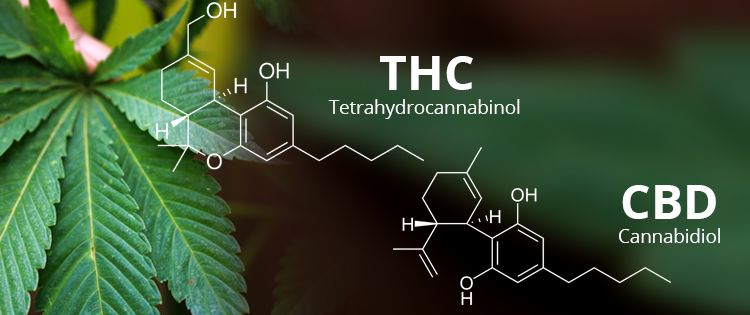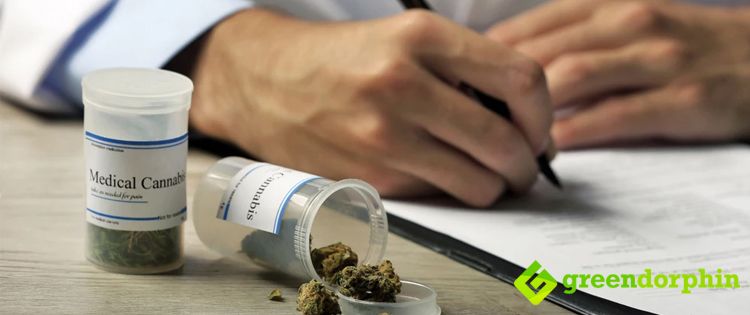When it comes to cannabis, there are so many terms that get thrown around and interchanged in regards to the plant and its components, that it can be difficult to work out what exactly is being referred to.
Early confusion over terms like hashish, weed, and hemp, has now been overtaken by two relatively new technical terms, namely cannabidiol and cannabinoids.
Since the legalization of cannabis has started to spread across vast swathes of the globe, terms such as these have appeared on products from chocolate bars and alcoholic drinks to medical creams and throat sprays, but what exactly do they mean, and how do they differ?
THC or CBD?
Firstly, it is important to know that a cannabinoid is a class of chemical compounds that acts upon the cannabinoid receptors in the body and brain, but the effects can be different depending on which cannabinoid is present.
Two particularly interesting cannabinoids are THC and CBD. Both have very different effects on humans, with THC (or tetrahydrocannabinol) causing the ‘high’ many marijuana users are happy to report, and CBD (or cannabidiol) giving no noticeable psychoactive effects at all, but instead has been linked to feelings of general wellbeing, and in some cases, temporary relief from certain ailments such as joint pain.

Today, it’s easy to find OTC (over the counter) pain relief products that contain CBD in them.
A new company called CBDMEDIC, offer ointments and creams that are applied to the joints of those who have suffered sporting injuries or arthritis, and once absorbed, can help relieve pain and inflammation, with none of the psycho-active element associated with THC.
Interestingly enough, the molecular structure of CBD and THC are identical, in that they both contain 21 carbon atoms, 30 hydrogen, and 2 oxygen atoms. The reason that they react differently in the body is down to their slightly different chemical arrangement. Small changes like this can result in a chemical compound that has vastly different properties, and in turn, each can have very different uses.
If you want to learn more about these two essential cannabinoids watch the below video with cannabis doctor, Dr Teh explaining them:
CBD, pain relief without the ‘high’?
Products that are high in CBD are generally cultivated from the hemp plant, which has high levels of CBD, and much smaller volumes of THC.
Most CBD products contain no THC at all after being extracted from the plant, in the same way that THC can be extracted from the marijuana plant with little or no CBD content either.
This separating of the different cannabinoids has allowed users to enjoy both compounds independently, which is great for anyone who wants to experience the effect one compound gives, but not the other.

While THC is the main reason recreational weed smokers enjoy using the plant, there are growing numbers of people that are becoming curious about the benefits CBD may provide, while having little to no interest in the psychedelic effects of THC.
This is especially true for those who use CBD medicinally, where being ‘high’ would simply be an unwanted side-effect.
Entering the mainstream
As marijuana is legalized in more countries around the world, and its use becomes even more mainstream, we can expect to see more and more products released that contain THC, CBD, or both.
Having options available that eliminate either component will allow users to decide which cannabinoid works for their particular need. Those who find the THC from smoking marijuana reacts badly with them will find themselves no longer excluded from the benefits of CBD.
It is also worth noting that the separation of CBD from the psychoactive ingredients could change the way people look at hemp and its uses. This alone can pave the way for new trials to see just how useful a cannabinoid such as CBD can be.

While there are companies doing this now, we should see a significant increase in the next decade, bringing forth new data that will show the long term benefits of using CBD as a treatment for our ailments, which in turn should provide consumers with a safe alternative to OTC (over the counter) remedies.
So there you have it.
Knowing your cannabinoids from your cannabidiol should allow you to make a more informed decision when it comes to buying your cannabis products.
The more people educate themselves on the difference between cannabinoids, the more people will be likely to try out compounds such as CBD. The cannabis plant has been labelled as a ‘miracle drug’ by many of its users since humans first began experimenting with it.
Hopefully, modern day experimentation by companies looking to bring CBD and THC based products to market will leave us with a much clearer picture of what this plant can do.
Even The World Health Organisation is now attempting to get the drug reclassified, in the hope that attitudes towards its properties may change. So far, results are looking promising to say the least.
- Red Vein Kratom Powder Vs CBD: Which Is A Better Choice? - December 18, 2023
- How CBD E-Liquids Are Making an Impact For Anxiety - November 27, 2023
- The 3 Mistakes To Avoid When Using Medical Marijuana - August 14, 2023


